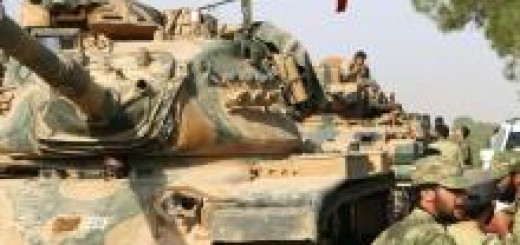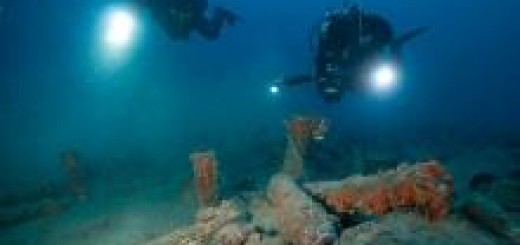China’s new missile brigades put Taiwan and U.S. Pacific bases in first-strike crosshairs
{loadposition bannertop}
{loadposition sidebarpub}
China is rapidly expanding missile brigades, launch sites, and support infrastructure along its eastern coast, aimed at Taiwan and U.S. forces. The buildup raises the stakes for American bases in Japan and Guam, testing U.S. defenses and logistics in a potential conflict.
The New York Times, reporting on September 29, 2025, details a rapid expansion of China’s missile brigades, launch complexes, and support infrastructure aligned along the mainland’s eastern seaboard, aimed squarely at Taiwan and at U.S. forces that would move to blunt an invasion. The picture is of a layered People’s Liberation Army Rocket Force built for tempo: road-mobile launchers dispersing on short notice, hard-roofed magazines feeding reload cycles, and a command network practiced in firing large mixed salvos. In a hypothetical conflict, China’s order of battle mixes short and medium-range ballistic missiles for the opening strike on Taiwan with anti-ship and land-attack systems able to push U.S. carriers and aircraft back beyond the first island chain, testing American logistics, magazine depth, and base resilience from Okinawa to Guam.Follow Army Recognition on Google News at this link
China has expanded its missile arsenal with DF-16, DF-17, DF-21D, DF-26, and CJ-series systems, building a layered strike network aimed at Taiwan and U.S. forces in the Western Pacific, raising the stakes for American deterrence (Picture source: Edit from CSIS Missile Defense Project).
The systems most likely to shape the first hours of a Taiwan contingency are China’s short and medium-range ballistic missiles. The DF-11 and DF-15 families, legacy but numerous, remain useful for runway-cratering and area suppression at ranges that cover all of Taiwan. The DF-16, a newer solid-fuel design in the 700 to 1,000 kilometer class, offers higher accuracy with maneuverable reentry vehicles and a spectrum of unitary and submunition warheads aimed at hardened aircraft shelters, command posts, and Patriot batteries. The DF-17 adds a hypersonic glide vehicle on a medium-range booster, flying depressed trajectories and cross-range maneuvers to degrade the engagement windows of Patriot PAC-3 MSE, THAAD, and Aegis interceptors. Together, these systems compress decision time for Taiwan’s air force, forcing a race between sortie generation and repeated runway denial cycles.
Beyond the strait, China’s anti-ship ballistic missiles extend the battle space against U.S. carriers and large-deck amphibs. The DF-21D, often described as the first operational “carrier killer,” pairs a medium-range booster with a terminal seeker designed to home on moving maritime targets at roughly 1,500 to 2,000 kilometers. The DF-26 pushes that reach toward 3,000 to 4,000 kilometers depending on profile, enabling attacks from secure mainland positions against carrier groups operating deep in the Philippine Sea or against fixed targets like Andersen Air Force Base on Guam. Accuracy estimates vary by variant, but the operational concept is clear: cue from a growing intelligence, surveillance, and reconnaissance layer, fire in volume with mixed seekers, and force U.S. naval aviation to fight from the edge of its effective range.
Cruise missiles round out the portfolio and complicate defense planning with low-altitude routes and multi-axis attacks. Ground-launched CJ-10 land-attack cruise missiles are credited with ranges around 1,500 to 2,000 kilometers, employing inertial navigation blended with satellite updates, terrain contour matching, and terminal scene-matching for precise strikes on fixed infrastructure. The air-launched CJ-20 on H-6K bombers extends reach against airbases and fuel farms, while YJ-12 and YJ-18 anti-ship missiles from aircraft, surface combatants, and submarines add supersonic terminal sprints or variable-speed profiles to saturate shipboard defenses. Fired in conjunction with ballistic salvos and decoys, these weapons are tailored to drain magazines and exploit radar clutter around island terrain and coastal approaches.
Precision ballistic missiles and submunitions aim to cut runways, crater taxiways, and collapse quick-repair cycles while hunting radar faces, command nodes, and hardened shelters. Cruise missiles thread low over water and terrain to strike power, POL, and C2 hubs. Electronic warfare and cyber operations add friction to Taiwan’s air picture and to U.S. battle management networks. If American forces surge forward, the Rocket Force pivots to counter-intervention: DF-21D and DF-26 salvos at maritime groups, medium and intermediate-range systems at Kadena and other Ryukyu bases, and long-range conventional shots at Guam to suppress sortie generation and to complicate tanker bridges essential for fifth-generation fighters. The PLA does not require perfect accuracy everywhere; it needs enough survivable launchers, reloads, and varied seekers to keep defenses off balance over several cycles.
For the United States, the center of gravity is the ability to sustain combat power inside the contested zone. Guam remains the critical hub for bombers, tankers, submarines, and sealift. A layered architecture integrating Aegis components with SM-3 and SM-6, THAAD batteries, and Army IBCS-linked Patriots is moving forward, but timelines, siting, and magazine depth remain hard constraints. In Japan, Agile Combat Employment disperses aircraft across austere strips, yet those fields require rapid runway repair kits, camouflage and deception, and point-defense systems with both hard-kill and soft-kill counters to small UAVs and cruise missiles. At sea, carriers will rely on longer-range air-to-air missiles, deck-launched decoys, and cooperative engagement to thin inbound salvos.
Beijing’s missile complex is not a standalone capability: it is the front end of an anti-access kill chain that fuses space-based sensors, maritime patrol aircraft, over-the-horizon radars, and a maturing command architecture. The strategic purpose is to coerce or conquer Taiwan while deterring or delaying U.S. intervention by raising costs in the opening week of combat. Washington’s answer is deterrence by denial: making clear that salvos can be blunted, airbases can be rapidly restored, and naval forces can operate inside the first island chain under persistent threat. That demands real investments in base hardening, decoys, distributed logistics, and larger magazines for interceptors like SM-6 and PAC-3 MSE, as well as accelerated fielding of mobile air defense and counter-UAS kits for expeditionary airfields.

{loadposition bannertop}
{loadposition sidebarpub}
China is rapidly expanding missile brigades, launch sites, and support infrastructure along its eastern coast, aimed at Taiwan and U.S. forces. The buildup raises the stakes for American bases in Japan and Guam, testing U.S. defenses and logistics in a potential conflict.
The New York Times, reporting on September 29, 2025, details a rapid expansion of China’s missile brigades, launch complexes, and support infrastructure aligned along the mainland’s eastern seaboard, aimed squarely at Taiwan and at U.S. forces that would move to blunt an invasion. The picture is of a layered People’s Liberation Army Rocket Force built for tempo: road-mobile launchers dispersing on short notice, hard-roofed magazines feeding reload cycles, and a command network practiced in firing large mixed salvos. In a hypothetical conflict, China’s order of battle mixes short and medium-range ballistic missiles for the opening strike on Taiwan with anti-ship and land-attack systems able to push U.S. carriers and aircraft back beyond the first island chain, testing American logistics, magazine depth, and base resilience from Okinawa to Guam.
China has expanded its missile arsenal with DF-16, DF-17, DF-21D, DF-26, and CJ-series systems, building a layered strike network aimed at Taiwan and U.S. forces in the Western Pacific, raising the stakes for American deterrence (Picture source: Edit from CSIS Missile Defense Project).
The systems most likely to shape the first hours of a Taiwan contingency are China’s short and medium-range ballistic missiles. The DF-11 and DF-15 families, legacy but numerous, remain useful for runway-cratering and area suppression at ranges that cover all of Taiwan. The DF-16, a newer solid-fuel design in the 700 to 1,000 kilometer class, offers higher accuracy with maneuverable reentry vehicles and a spectrum of unitary and submunition warheads aimed at hardened aircraft shelters, command posts, and Patriot batteries. The DF-17 adds a hypersonic glide vehicle on a medium-range booster, flying depressed trajectories and cross-range maneuvers to degrade the engagement windows of Patriot PAC-3 MSE, THAAD, and Aegis interceptors. Together, these systems compress decision time for Taiwan’s air force, forcing a race between sortie generation and repeated runway denial cycles.
Beyond the strait, China’s anti-ship ballistic missiles extend the battle space against U.S. carriers and large-deck amphibs. The DF-21D, often described as the first operational “carrier killer,” pairs a medium-range booster with a terminal seeker designed to home on moving maritime targets at roughly 1,500 to 2,000 kilometers. The DF-26 pushes that reach toward 3,000 to 4,000 kilometers depending on profile, enabling attacks from secure mainland positions against carrier groups operating deep in the Philippine Sea or against fixed targets like Andersen Air Force Base on Guam. Accuracy estimates vary by variant, but the operational concept is clear: cue from a growing intelligence, surveillance, and reconnaissance layer, fire in volume with mixed seekers, and force U.S. naval aviation to fight from the edge of its effective range.
Cruise missiles round out the portfolio and complicate defense planning with low-altitude routes and multi-axis attacks. Ground-launched CJ-10 land-attack cruise missiles are credited with ranges around 1,500 to 2,000 kilometers, employing inertial navigation blended with satellite updates, terrain contour matching, and terminal scene-matching for precise strikes on fixed infrastructure. The air-launched CJ-20 on H-6K bombers extends reach against airbases and fuel farms, while YJ-12 and YJ-18 anti-ship missiles from aircraft, surface combatants, and submarines add supersonic terminal sprints or variable-speed profiles to saturate shipboard defenses. Fired in conjunction with ballistic salvos and decoys, these weapons are tailored to drain magazines and exploit radar clutter around island terrain and coastal approaches.
Precision ballistic missiles and submunitions aim to cut runways, crater taxiways, and collapse quick-repair cycles while hunting radar faces, command nodes, and hardened shelters. Cruise missiles thread low over water and terrain to strike power, POL, and C2 hubs. Electronic warfare and cyber operations add friction to Taiwan’s air picture and to U.S. battle management networks. If American forces surge forward, the Rocket Force pivots to counter-intervention: DF-21D and DF-26 salvos at maritime groups, medium and intermediate-range systems at Kadena and other Ryukyu bases, and long-range conventional shots at Guam to suppress sortie generation and to complicate tanker bridges essential for fifth-generation fighters. The PLA does not require perfect accuracy everywhere; it needs enough survivable launchers, reloads, and varied seekers to keep defenses off balance over several cycles.
For the United States, the center of gravity is the ability to sustain combat power inside the contested zone. Guam remains the critical hub for bombers, tankers, submarines, and sealift. A layered architecture integrating Aegis components with SM-3 and SM-6, THAAD batteries, and Army IBCS-linked Patriots is moving forward, but timelines, siting, and magazine depth remain hard constraints. In Japan, Agile Combat Employment disperses aircraft across austere strips, yet those fields require rapid runway repair kits, camouflage and deception, and point-defense systems with both hard-kill and soft-kill counters to small UAVs and cruise missiles. At sea, carriers will rely on longer-range air-to-air missiles, deck-launched decoys, and cooperative engagement to thin inbound salvos.
Beijing’s missile complex is not a standalone capability: it is the front end of an anti-access kill chain that fuses space-based sensors, maritime patrol aircraft, over-the-horizon radars, and a maturing command architecture. The strategic purpose is to coerce or conquer Taiwan while deterring or delaying U.S. intervention by raising costs in the opening week of combat. Washington’s answer is deterrence by denial: making clear that salvos can be blunted, airbases can be rapidly restored, and naval forces can operate inside the first island chain under persistent threat. That demands real investments in base hardening, decoys, distributed logistics, and larger magazines for interceptors like SM-6 and PAC-3 MSE, as well as accelerated fielding of mobile air defense and counter-UAS kits for expeditionary airfields.






